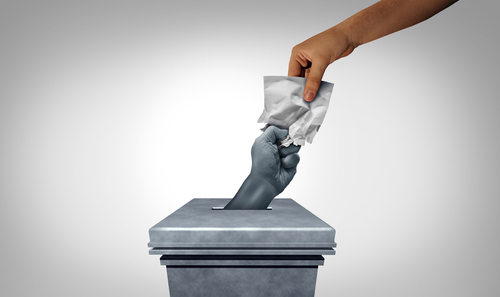
Regardless of which side gains the majority in November, the House of Reps is prepared for a massive shift that will probably make the chamber substantially younger and more multifaceted.
A collection of 147 non-incumbent House hopefuls expected to win seats available or competing in contested races is, on aggregate, younger and more diverse along racial and sexual lines than the entire House.
The average age is 47, whereas the average age of House members presently is 58.
Approximately three out of ten candidates are non-white, and slightly more than a third are women, compared to roughly 28 percent for both groups in the current House. Eight individuals are publicly LGBTQ+.
ICYMI over the weekend: a comprehensive look at the gender, race, and sexuality diversity of the candidates for House, Senate, and governor, from me and Eleanor Lutz. There's a lot of good news for representation, but also backsliding in some areas. https://t.co/TL6aUmRn7Q
— Maggie Astor (@MaggieAstor) November 7, 2022
The Overall Picture
As per OpenSecrets, this year witnessed the second-largest number of House members electing not to seek reelection since 1996, leaving many available seats for a new breed to fill.
This election cycle, 29 Dems and 17 Republicans are retiring or seeking another position.
Several contenders would usher in congressional firsts. Becca Balint, the Democratic candidate to replace Rep. Peter Welch (D-Vt.), is likely to become Vermont the only state without a woman in Congress. She would also be the first openly LGBT member of Congress from the state.
Maxwell Frost, the Democrat seeking to replace Rep. Val Demings (D-Fla.), while Karoline Leavitt, the Republican opposing Rep. Chris Pappas (D-N.H.), might be the first members of Gen Z to serve in Congress. The youngest woman ever voted to Congress would be Leavitt.
Maxwell Frost is the first Gen Z member elected to Congress.
Frost’s win notably adds to the body’s generational diversity: The average age of a House member is currently 58, and more than 80 percent of members are Gen X or boomer. #ElectionNight https://t.co/GqNqd7kbp3
— Vox (@voxdotcom) November 9, 2022
In New York’s 3rd congressional district, both major party contenders seek to become Long Island’s first openly homosexual member of Congress. In addition, George Santos would be the first out gay non-incumbent Conservative to be elected.
Several candidates would be household names upon entering Congress. Erstwhile Reps. Bruce Poliquin (R-Maine) and Max Rose are among those seeking to recapture their previous House seats (D-N.Y.).
Retired Trump Interior Secretary Ryan Zinke, who formerly represented Montana’s at-large congressional district, is also a Republican.
New Yorker Dan Goldman will indeed return in a deeper context. In 2019, he was the lead attorney for the Democrats in the initial Trump impeachment hearing.
Others enjoy less traditional notoriety: Mike Tyson’s coach and consultant was Tom Patti, the Republican candidate against California Democrat Josh Harder.
Monica Tranel used to be a two-time Olympic rower and the Democratic nominee for Montana’s newly created 2nd congressional district.
Morgan McGarvey, the Democratic candidate to replace John Yarmuth (D-Kentucky), attracted nearly 130,000 fans on TikTok with films exposing the difficulties of being the Democratically elected leader in Kentucky’s predominately Republican state senate.
Alek Skarlatos, a vet and Republican candidate for Oregon’s 4th congressional district, helped subdue a shooter on a train in France in 2015 and later portrayed himself in a Clint Eastwood-directed film about the incident.
On The Other Hand
While Congress is on course to become more diversified, the number of contested House districts has decreased this year due to gerrymandering by numerous state legislatures. This could have repercussions for the functioning of the next Congress.
Josh Chafetz, a law professor at Georgetown University, told Axios, “As a district becomes safer, the electoral interests switch to not losing your primaries instead of not losing the general election.”
“This implies that you are attempting to appeal to the average primary voter, who will be more radical than the typical general election voter.”
This trend, according to Chafetz, has already taken root, citing the smaller percentage of House Republicans who voted for big bipartisan initiatives such as CHIPS and infrastructures relative to their Senate colleagues.
















